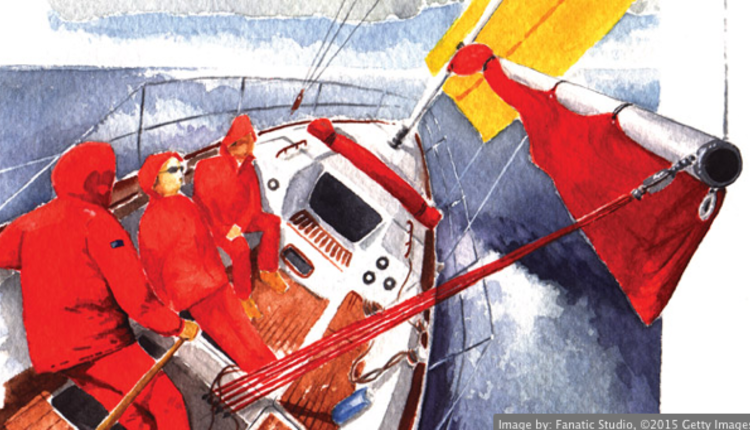
For the past 12 months, Dr. Joe Webb, director of WhatTheyThink’s Economics and Research Center, has been detailing a significant uptick in commercial printing shipments over year-ago numbers. In his most recent analysis for June 2015, he noted a +5.3% over June 2014–the most significant increase since 2010.
At IDC, we are seeing indications of a similar trend in customer communication management (CCM). Early research in two market segments has projected significant growth in the number of companies producing most, or all, of their customer communications in print. In addition, the drive to reduce costs by suppressing print seems to have peaked, as companies now appear more focused on giving the customer what he or she wants rather than simply cutting costs.
In the coming months, we will be looking at additional industry segments to see if this trend holds across multiple industries, but for now, we can develop a few hypotheses about what is happening.
Beginning in earnest with the economic downturn in 2008, companies focused extensively on cutting costs, and reducing print and mail expense was seen as a comparatively simple and straightforward place to make progress. The promise, at the time, of digital media channels was that customers could switch off their paper bills, statements and random notifications by agreeing to accept digital communications.
A variety of industry studies, some of which I participated in, catalogued and documented this effort. Firms had aggressive goals for digital adoption, often ranging from 50% to 75%, or more, of their customers, but what ultimately occurred was quite a bit less, with most firms settling in at somewhere between 30% and 40% adoption.
At IDC, we are seeing indications of a similar trend in customer communication management (CCM). Early research in two market segments has projected significant growth in the number of companies producing most, or all, of their customer communications in print. In addition, the drive to reduce costs by suppressing print seems to have peaked, as companies now appear more focused on giving the customer what he or she wants rather than simply cutting costs.
In the coming months, we will be looking at additional industry segments to see if this trend holds across multiple industries, but for now, we can develop a few hypotheses about what is happening.
Beginning in earnest with the economic downturn in 2008, companies focused extensively on cutting costs, and reducing print and mail expense was seen as a comparatively simple and straightforward place to make progress. The promise, at the time, of digital media channels was that customers could switch off their paper bills, statements and random notifications by agreeing to accept digital communications.
A variety of industry studies, some of which I participated in, catalogued and documented this effort. Firms had aggressive goals for digital adoption, often ranging from 50% to 75%, or more, of their customers, but what ultimately occurred was quite a bit less, with most firms settling in at somewhere between 30% and 40% adoption.
It turned out there was a lot of variation in what customers wanted. Not all of them wanted everything in a digital form, and not all of them stayed with digital options for the long term. There was a lot of churn, and most companies had a very limited, or no, way of tracking how many customers reverted to print.
It also turned out that “digital channels” meant different things to different people, and the broader digital landscape became much more varied and complicated. Managing who wanted what, through what channel was a challenge few companies could overcome without significant investment in infrastructure to analyze and manage preferences. There are other issues–such as the slow rate of change in regulatory regimes, some recovery in economic conditions and improved corporate performance–that also had an impact and de-emphasized the cost-saving driver.
Today, we seem to be at a point where firms have decided that making everything available everywhere is the simplest approach. While use of digital distribution is still on the rise, so is the use of paper. In our research, the number of firms distributing customer communications via multiple, simultaneous channels is also trending upward.
This indicates that, at least for now, digital media is no longer cannibalizing print but, instead, is supplementing it.
The other hypothesis is that lumping demographic groups together by age and assuming that younger generations will unilaterally forego paper may not be realistic. It may well be more about specific types of communications rather than the age of the customer. Certainly, younger generations can be generalized as more digitally savvy, but there is still a significant usability burden with digital documents in some circumstances. Printed documents seem to have some lasting utility when money is involved, such as in paying bills. When documents need to be transferred to, or used by, some other party, paper remains the ultimate universal format.
Then, there is the convenience factor. Young people are highly mobile, which often means they don’t have printers. When they need a document in paper, it’s often a hassle to find one. It’s simpler to leave that burden on whatever company they are dealing with and just get the paper in the mail. Even if they never use it, the redundancy has no obvious cost and can be comforting.
The Internet of things (IoT), evolving mobile printing infrastructure and as-yet-undiscovered digital mechanisms may someday reduce or eliminate the need for printed communications. Today, we seem to have reached a stasis. The drive to reduce print costs seems to be subsiding, and the variation in customer preferences seems to be driving a true multi-channel distribution approach on the part of businesses.
All of these are just hypotheses. Our upcoming research will help us validate whether these are truly long-term trends or just temporary anomalies. I’m looking forward to what we find.
Terry Frazier is a research director within IDC's Document Solutions research group. He is responsible for the Smart Customer Engagement practice as well as written research in managed print and document services and document outsourcing. Follow @IDCHardcopy on Twitter.


















